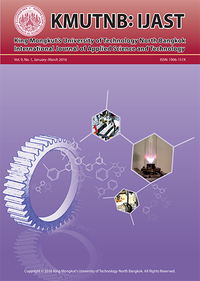Numerical Implementation of Energy-based Models in Explicit Finite Element Analysis for Sand in Plane Strain Compression
Main Article Content
Abstract
Soil is one of the most complex materials. In finite element analysis, the relevant constitutive model is one of the main key that provides the accurate prediction of strength and deformation characteristic of geotechnical structure. The objective of this study is to implement the elasto-plastic work-hardening-softening constitutive model (Energy-based model) into ABAQUS via VUMAT subroutine. Without updating Jacobian matrix process, the VUMAT subroutine is rather more convenient to implement than UMAT subroutine. Therefore, the high efficiency of strategy to update the new stress and plastic strain energy is crucially important. The VUMAT simulated results on the effect of initial stress and softening behavior were verified by UMAT and the experimental results of Toyoura dense sand under plane strain condition. The VUMAT subroutine could accurately simulate the strength and deformation characteristics of Toyoura sand. However, its results shows the irregularities at transition point.

